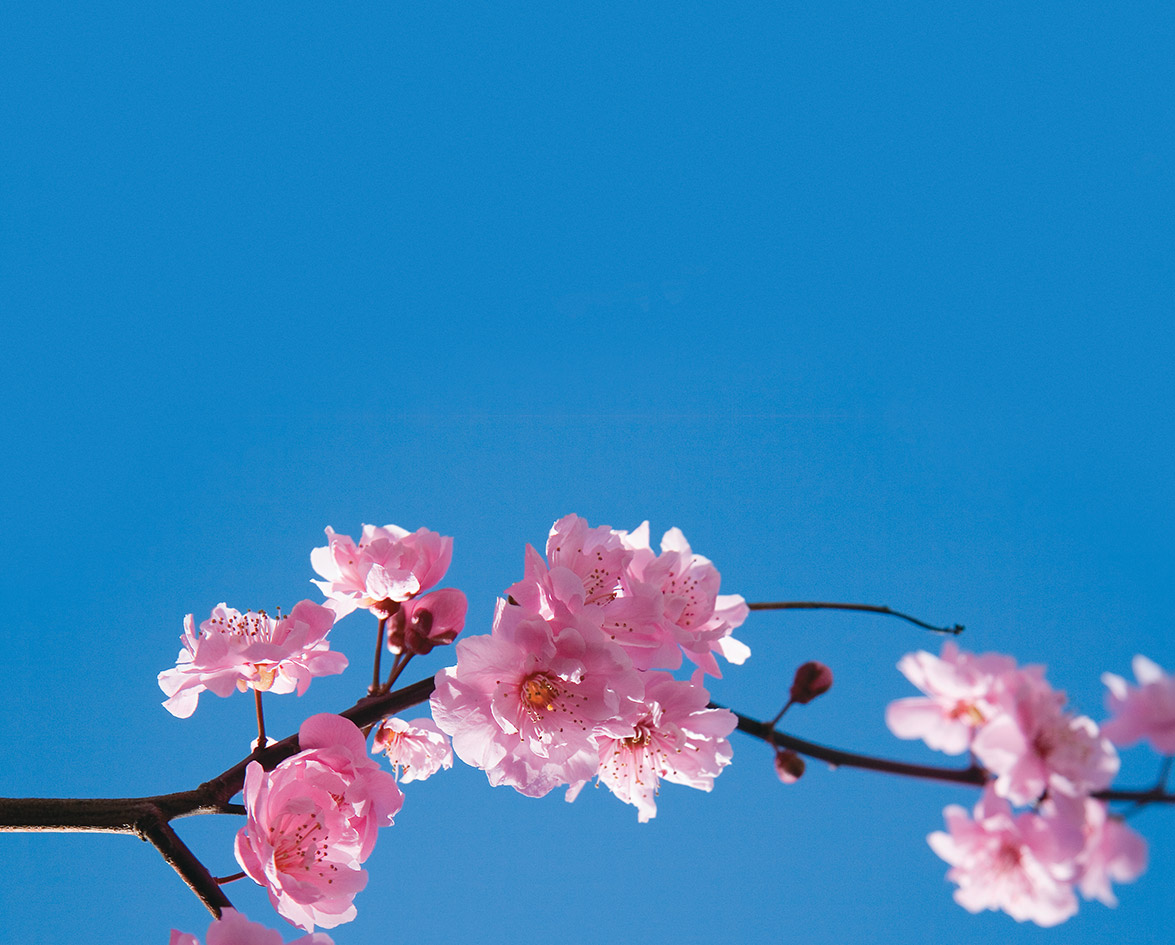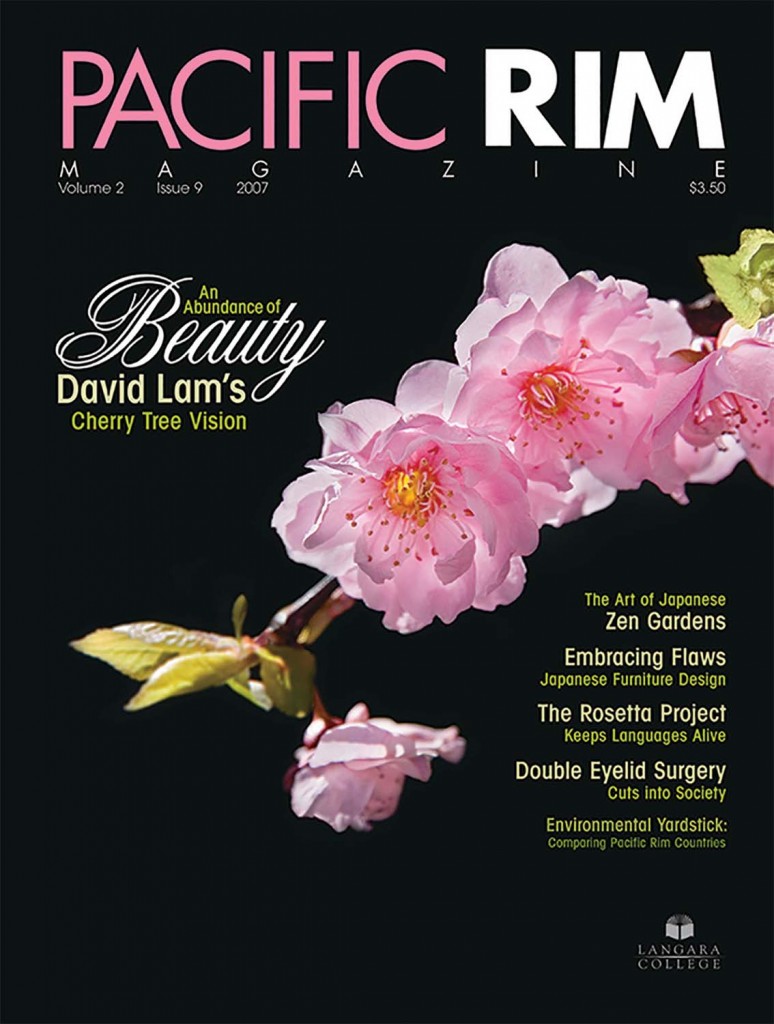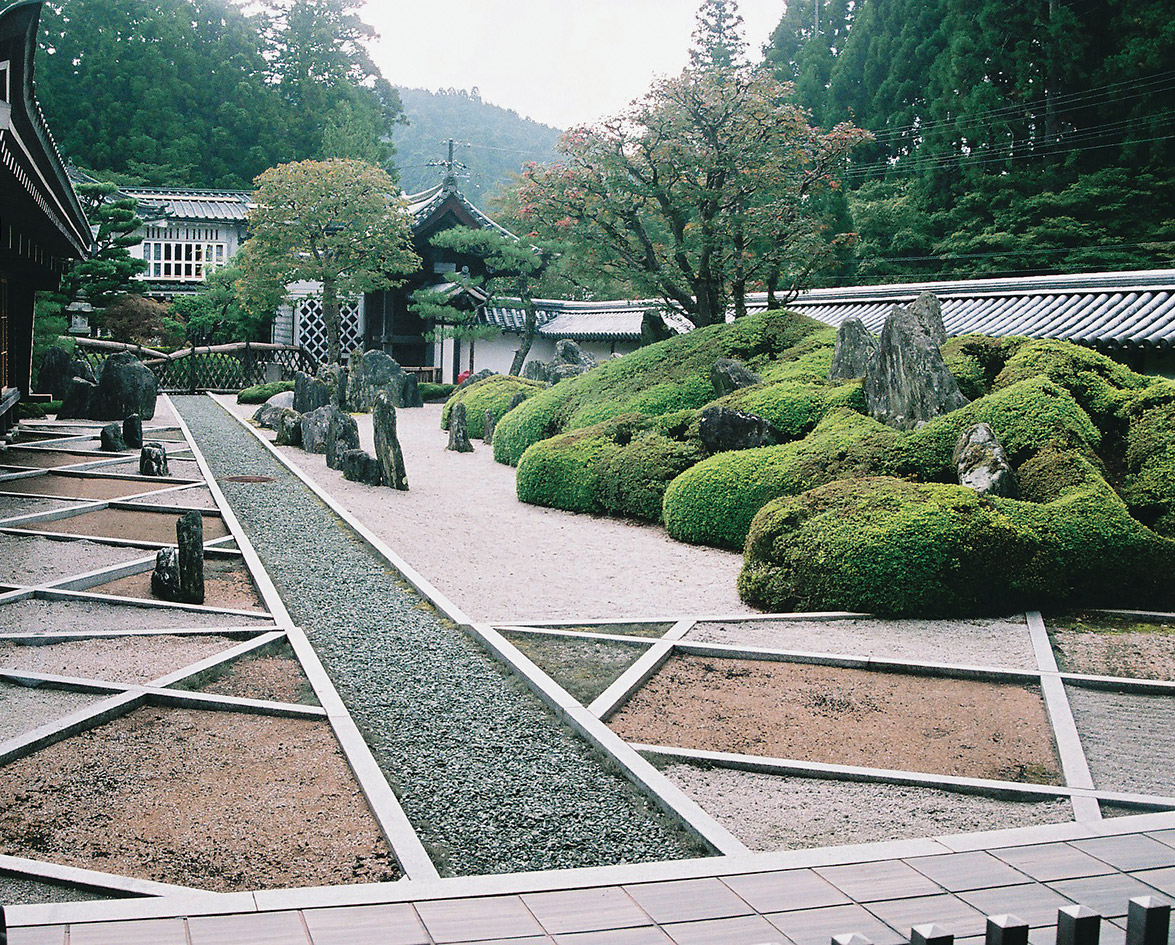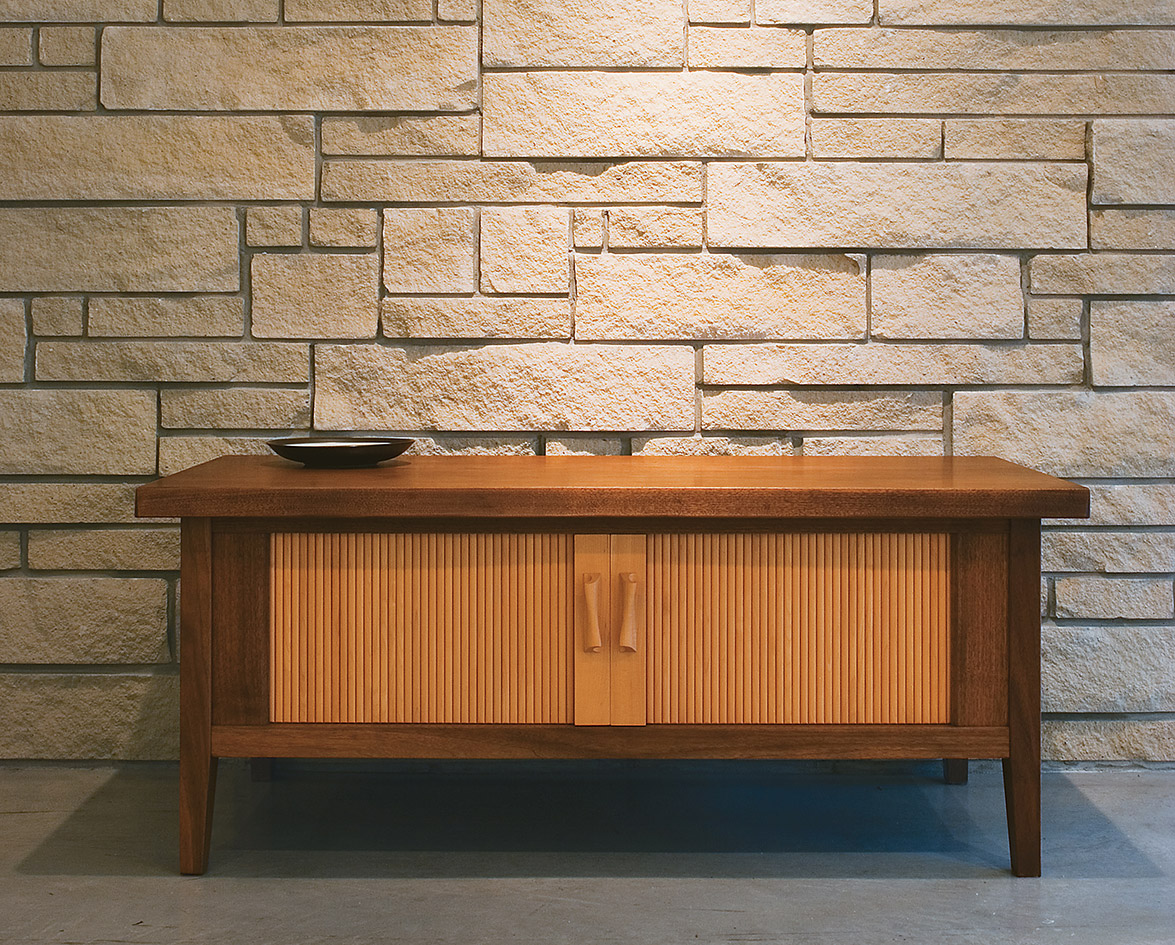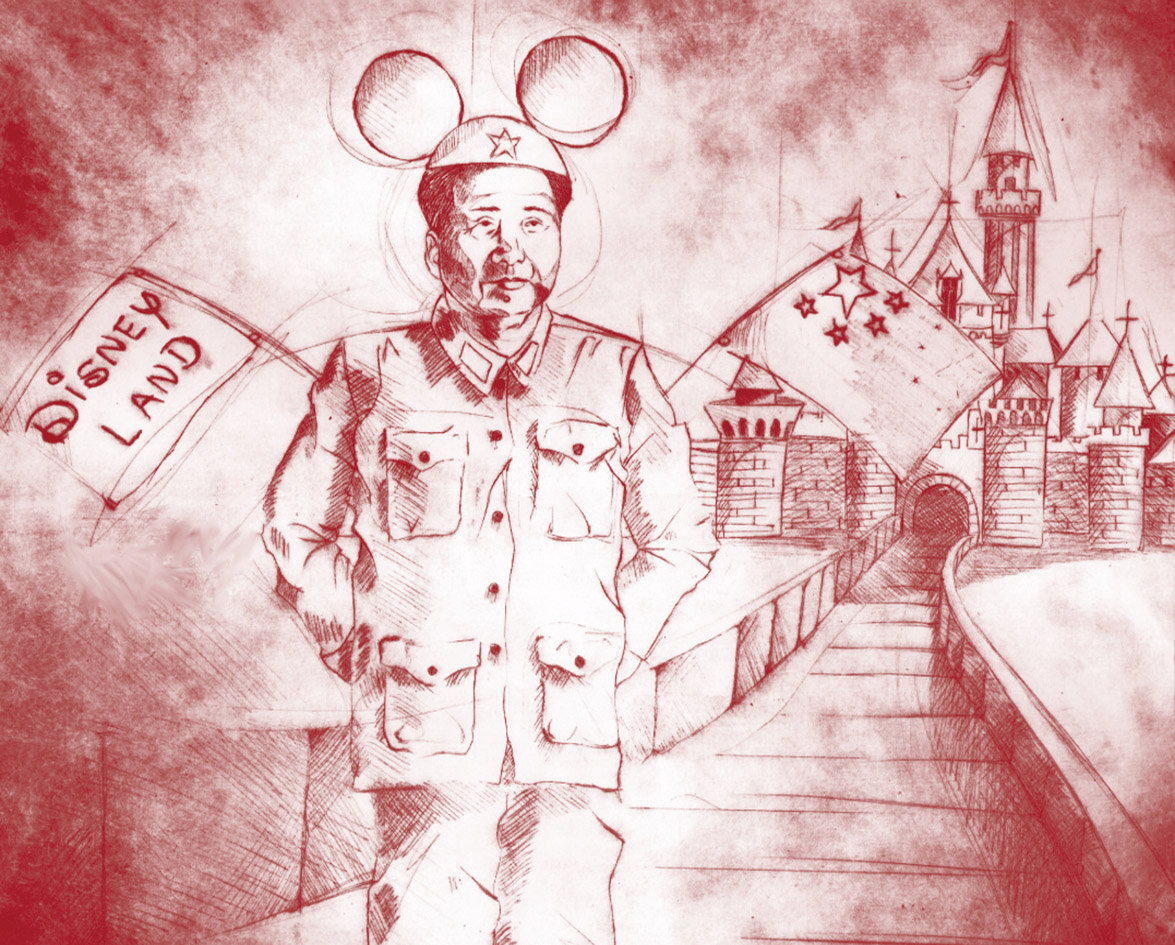One spring day in 1947, a young graduate student at Temple University in Philadelphia gathered his friends and set out on a road trip to Washington, DC. Armed with a deep love of flowers and memories of cherry blossoms from a Japanese cruise, he was determined to see the famous cherry trees of the US capital. When he learned about the National Cherry Blossom Festival, he had only one thing on his mind: get to Washington, and get there fast. Upon arrival, the student and his friends experienced the cherry trees in full bloom. It was a sight to behold — a breath of fresh air to the young man, who a couple of years before had experienced the ugliness of World War II. “It brought tears to my eyes. I just couldn’t describe how beautiful it was,” recalled David Lam, former British Columbia lieutenant governor, in his home overlooking Stanley Park.
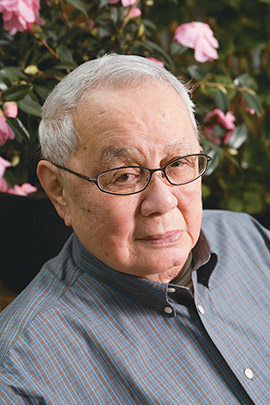
Where It All Began
David Lam was born in Hong Kong on July 25, 1923, and from an early age he had a love for growing flowering plants. This was rare, since in those days very few people in Hong Kong cultivated their own gardens. While other schoolchildren secretly read comic books in class, David Lam read a seed catalogue containing photos of flowers. Lam’s first business venture, which began in his high school years, involved selling flowers to friends of the family and to his local church. As he expanded the garden in his family’s Kowloon home, he decided to sell his flowers at an open flower market he passed on his way to class. He continued this business into his early years of university.
Several years later, while working as Chief Manager for the family-owned Ka Wah Bank, he decided to open a flower shop. Along with the CEO of the Hong Kong and Youmati Ferry and the vice president of Hong Kong Land, he opened the Green Fields Flower Shop at Ocean Terminal. The shop soon became popular in Hong Kong.
In 1967, Lam, his wife Dorothy, and their three daughters moved to Vancouver. The parks, beaches, mountains, and cleanliness impressed the Lams and they looked no further. “When I came to this country, I said, ‘This is it.’ Perfect weather, perfect climate, perfect everything for cherry,” recalled Lam.
In the decades following their move to Canada, David and Dorothy Lam gave to a variety of causes and institutions in Vancouver, Victoria, and other areas of Canada. Regent College, a theological school on the University of British Columbia campus, was one of the institutions that attracted Lam’s support in early 1982. In September 1988, the Regent College auditorium opened and was named the Lam Chi Fung Auditorium after Lam’s father. In addition, 120 cherry trees of the Shirotae variety were planted around Regent College at Lam’s request.
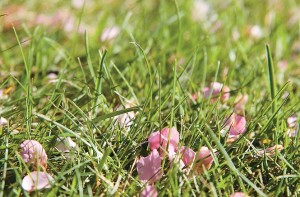
The Blossom Project
The initial gift of cherry trees to Vancouver was from the mayors of Yokohama and Kobe in the 1930s to honour the Japanese-Canadian soldiers who served during World War I. In 1958, more trees were donated and planted along Cambie Street between 49th and 33rd Avenues, in Queen Elizabeth Park, and around the Japanese monument in Stanley Park. Lam hopes to have thousands more planted all over Vancouver, envisioning enough trees planted to eventually earn Vancouver the title ‘West Coast’s Cherry Blossom Capital.’ He wishes to put forward all of his effort, money, and influence in order to get others involved in the project.
“Lam believes the cherry tree brings joy; one’s enjoyment of it brings invisible wealth.”
Since the land on which Lam hopes the cherry trees will be planted belongs to the city of Vancouver, the initiative and approval of the Vancouver Parks Board is necessary to see the project through. The board must be prepared to dedicate enough parkland to the planting of cherry trees. According to the Parks Board website, 3,500 trees of various species are planted around the city annually to replace dead or diseased trees, or to plant new ones in treeless areas. With over 17,000 growing on city boulevards, the flowering Japanese cherry tree is the most common street tree. Of the number of trees planted each year, Lam expects some of them will be cherry trees, and hopes that with his financial contribution even more will be added to that number.
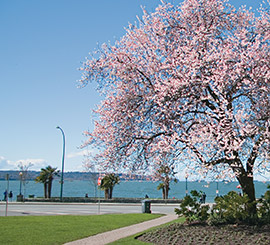
Parks Board Commissioner Marty Zlotnik was pleasantly surprised when told of Lam’s vision for Vancouver. According to Zlotnik, the cherry blossom project was well received by some of the senior Parks Board staff, which later offered a number of potential planting locations. Zlotnik admits the project has its challenges; namely, the availability of cherry trees, the political will of the Parks Board staff and the need for the Commissioners’ approval, but the people involved with the project hold hope that these challenges will be met.
Lam initially had no plans of proposing specific locations to the Parks Board, but that changed when he learned of the Vancouver Cherry Blossom Festival. The first city wide celebration of the festival was held in the spring of 2006. He hopes cherry trees will be planted at his namesake park, located at the foot of Drake Street on Pacific Boulevard, beside False Creek. With cherry trees as the main attraction at David Lam Park, it may become the focal point of the festival. Zlotnik sees the planting of cherry trees at David Lam Park as a real possibility, especially since the banks of False Creek, Vanier Park and Sunset Beach have all been identified as potential locations for cherry tree planting.
Lam encourages his friends overseas to visit Vancouver when the city has its best foot forward: autumn foliage, the flowers in spring, snow in winter, and even the salmon run. “Vancouver is becoming [very] important, particularly to people in Asia,” said Lam. The blooming of the cherry tree coincides with a slow time in the hotel season. From an economic perspective, it is a good time to have visitors flooding into the city. “We’ve got so much to offer. Can you imagine if we offered cherry trees? I’m going to sell the cherry, not only the beauty, but there is a philosophy,” Lam explained. “Cherry trees philosophically tell people, okay, you can be beautiful, powerful, and on top of the world, but remember that you have very limited time. Use that time to make people happy.”
It’s A Blooming Joy
“Several times I asked really rich people, ‘how much are you worth, your invisible assets?’ They miss the word invisible,” he lamented. “They reply, ‘you don’t have to ask me. Every day I am in the newspaper.’ “I am not asking you in dollars and cents,” Lam tells them. “Your enjoyment of life, your love of beauty and harmony. Your health — you sleep well, you make people happy, and you yourself become happier,” he explains. Lam believes the cherry tree brings joy; one’s enjoyment of it brings invisible wealth.
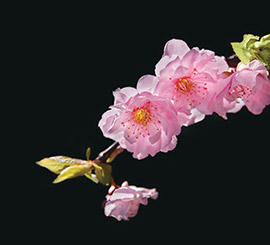
During his term as lieutenant governor of B.C. from 1988–1995, Lam promoted harmony between the province’s cultural communities. As a philanthropist and avid gardener, he has helped enhance B.C.’s physical beauty through notable projects such as the Dr. Sun Yat-Sen Classical Chinese Garden and the enhancement of the Government House gardens. Similarly, the cherry tree throughout history has become an instrument of diplomacy, as well as of landscape beautification and enhancement. Lam, who founded the Floribunda Philanthropic Society in 1982, is now one of the strongest advocates of abundant cherry tree blossoming. Floribunda in Latin means “abundant flowers.” He laughs heartily at the suggestion that he and the cherry tree have much in common, and quickly points out that he hopes the similarities stop there since cherry trees are in bloom for a relatively short time. The blooming period can last for 14 days, and then the petals start to fall and leaves begin to appear.
At 83 years old, Lam has fully retired, but continues to engage in various activities with his garden society and hymn society. He has also cooked meals for participants of the Alpha Course (a series of talks on the Christian faith) at his church. His rooftop garden overlooking Stanley Park is a sight to behold — in the fall, a solitary yellow hibiscus flower, which reminds Lam of Hong Kong, is radiant against the rich green foliage of his garden.
When asked about his favourite cherry tree variety, Lam paused, and after much consideration, he answered. “They are actually competing. My favourite is Akebono. Akebono is a tree, which when you drive out here on Pacific Boulevard and on your right hand side, there are about seven or nine trees there. They come up like an umbrella and when they flower, there are no leaves, and all the flowers look down; so you can walk underneath and look up, and see all the flowers.” The Akebono cherry also grows on 17th Avenue at Cambie Street.
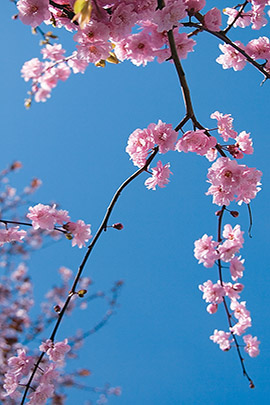
The cherry tree blossoms arrive with a show of beauty; standing under a Yoshino cherry tree, one sees clusters of single flowers with five petals, the stems meeting at the centre to create a symmetrical star shape. Every year, the cherry tree quietly waits for springtime to tell its story. It is the message, not just the physical beauty that Lam hopes both Vancouverites and visitors will embrace.





